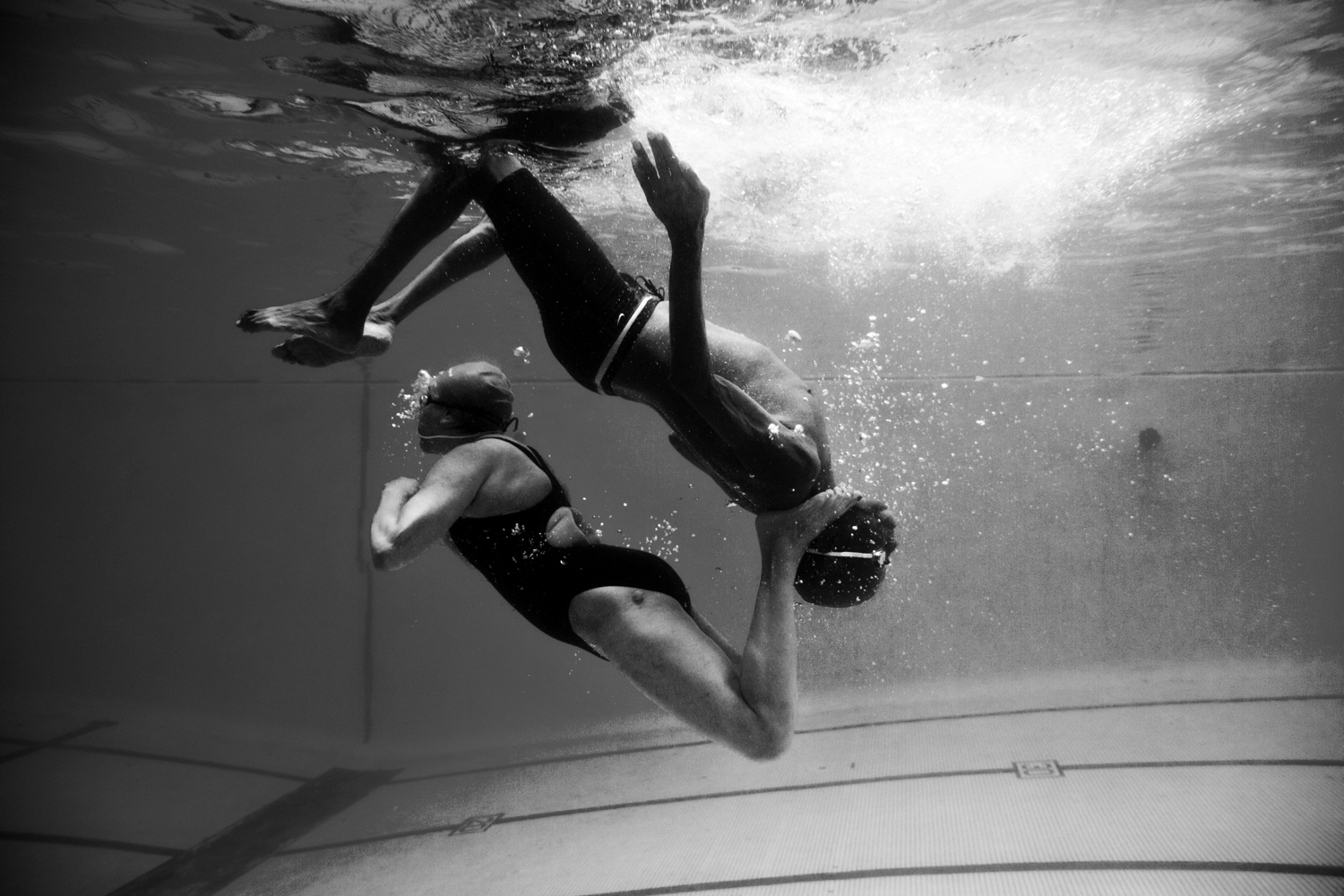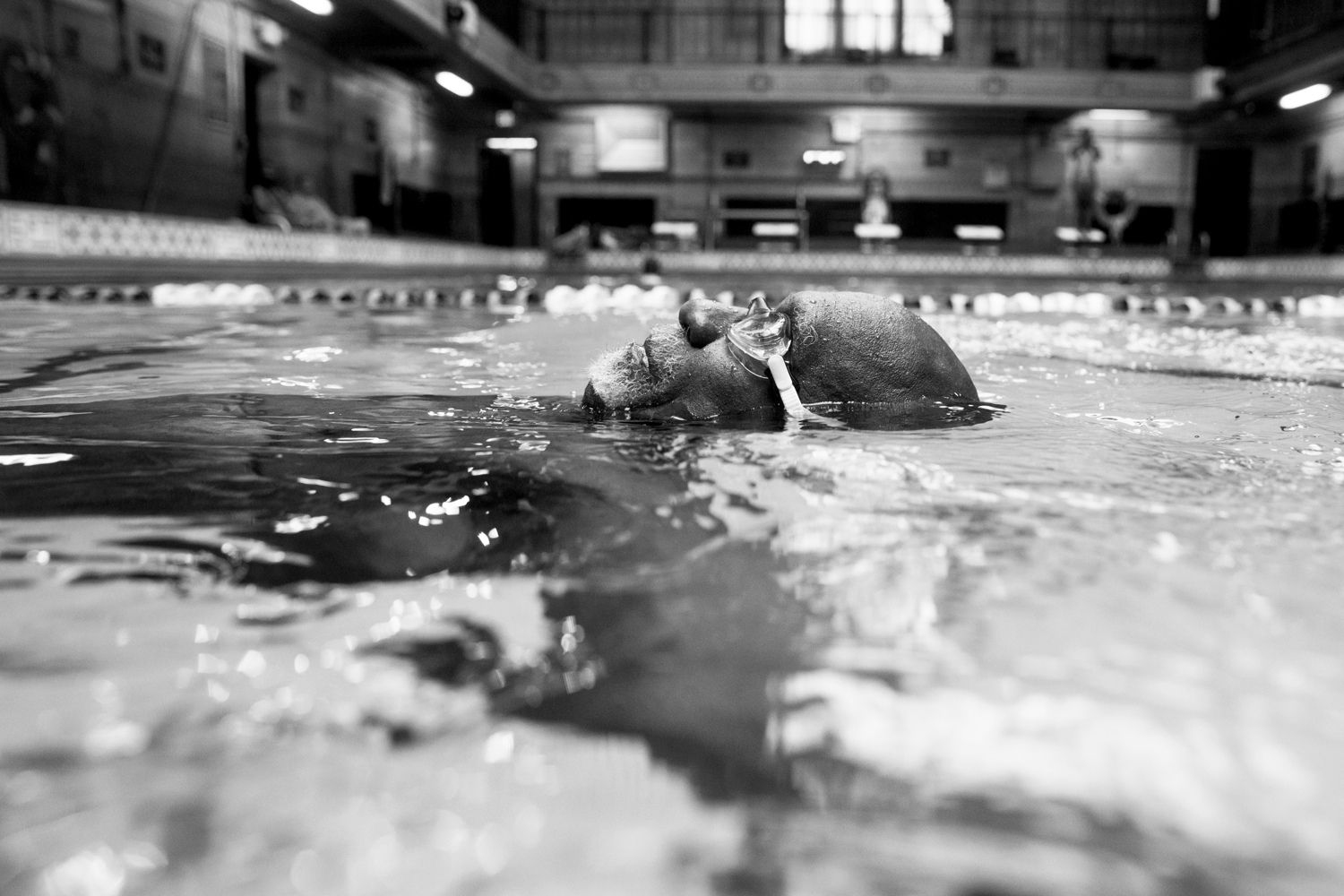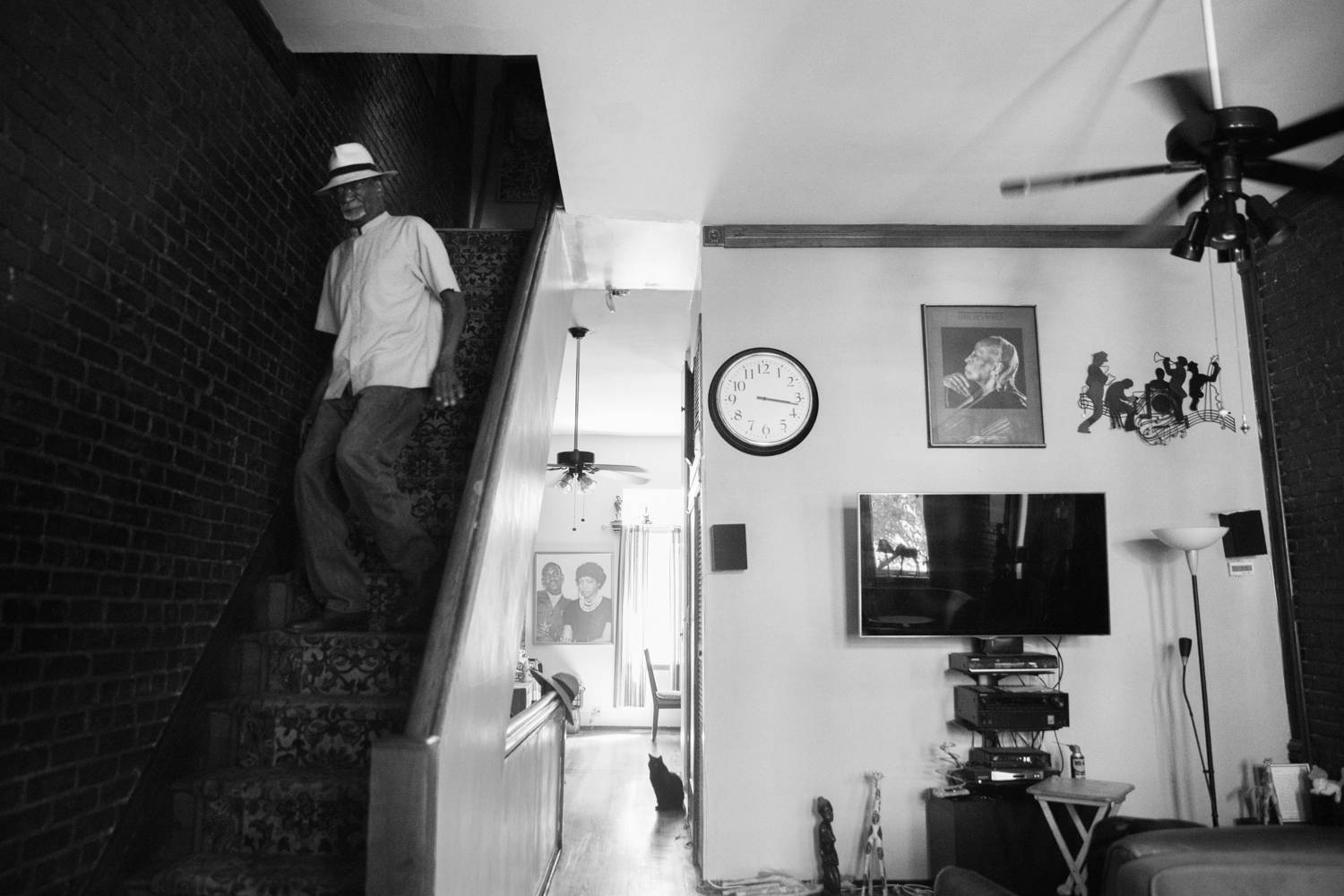On a Monday afternoon in Harlem, New York, Luther Gales emerges from a locker room beside the swimming pool at the Hansborough Recreation Center dressed in black swim trunks. A member of the Harlem Honeys and Bears synchronized swim team, Gales, 77, stands at the edge of the pool, stretches his red swim cap over his head and jumps into the deep end to swim some warm-up laps.
The all-black senior synchronized swim team has been around since 1979. Today, the 24 active members range in age from 58 to 95 and compete in city and state competitions every year. The team meets three days a week to practice its routines, including its signature pyramid performed to “Chariots of Fire” by Vangelis Papathanassiou.
No matter their age, disability or challenge, coach and choreographer Oliver Footé makes sure there is a formation each member can participate in. The recreation center has a pool lift for those who cannot use the stairs. Some members say they feel the freest in the water, no longer needing their wheelchair, cane or walkers. Footé will create different segments for members with disabilities, showcasing their strengths. Swimming helps build muscular and cardiovascular strength and is a great exercise for seniors because it presents little risk of injury, is low-impact and improves flexibility.
Gales, a retired housing police officer and a former Marine, is at the pool about five days a week. When not practicing with the Honeys and Bears, Gales, along with other members of the team, spends afternoons teaching young swimmers for free. Gales wants to break the stereotype that black people can’t swim and wants to integrate swimming into black recreational culture, he said.
According to research from the USA Swimming Foundation, 70 percent of African-Americans don’t know how to swim. The Centers for Disease Control and Prevention says that black children drown at 5.5 times the rate of other children. Formal swim lessons can reduce the likelihood of childhood drowning significantly.
Read the full story on ESPN’s The Undefeated. Photos and writing by Jackie Molloy
















